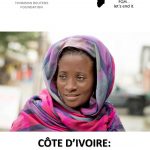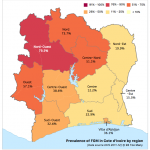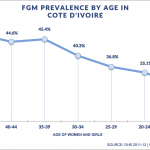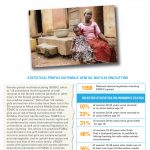Côte d’Ivoire (Ivory Coast)

Home | Where does FGM/C happen? | Côte d’Ivoire (Ivory Coast)
View all regions
View all countries
- Australia
- Benin
- Brunei
- Burkina Faso
- Cameroon
- Canada
- Central African Republic
- Chad
- Colombia
- Côte d’Ivoire (Ivory Coast)
- Denmark
- Djibouti
- Egypt
- Eritrea
- Ethiopia
- France
- Germany
- Ghana
- Guinea
- Guinea-Bissau
- Indonesia
- India
- Iran
- Iraq
- Ireland
- Jordan
- Kenya
- Kuwait
- Liberia
- Malawi
- Malaysia
- Mali
- Malta
- Mauritania
- Mexico
- Niger
- Nigeria
- Oman
- Pakistan
- Peru
- Portugal
- Russia
- Saudi Arabia
- Senegal
- Sierra Leone
- Singapore
- Somalia
- Somaliland
- South Sudan
- Spain
- Sudan
- Sweden
- Switzerland
- Tanzania
- Thailand
- The Gambia
- The Maldives
- Togo
- Uganda
- United Arab Emirates
- United Kingdom
- United States of America
- Yemen
- Zambia
- Zimbabwe
Population
25 million
Estimated prevalence among girls and women aged 15-49
37%
2018 population growth rate
2.52%
Estimated prevalence among girls and women aged 15-19
31.3%
Type practised
The most widely practised form of female genital cutting (FGC) in Côte d’Ivoire is Type II.
[Source: UNICEF, DHS and MICS]
Age
Girls in Côte d’Ivoire are most likely to undergo FGC before the age of five.
Source: 28 Too Many
Agent
Traditional practitioners.
Source: 28 Too Many
Legal status
Illegal. In 1998, a law was passed that made FGC punishable by fine and imprisonment.
National progress
- 1998 – Legislation passed, supported by government-backed awareness campaign
- 2008 – National Action Plan (2008–2012) specifically included the protection of women and girls against sexual violence, including FGC
- 2010 – ‘Zero tolerance’ national campaign to end FGC, by the Ministry for Family, Women and Social Affairs, backed by the UN Development Fund for Women, UNICEF and UNFPA
- 2018 – Minister for Women, Protection of the Child and Solidarity Mariatou Koné publicly reaffirmed Government commitment to tackling FGC
FGC is deeply entrenched within rural communities of Côte d’Ivoire, particularly in the north and west. Much more needs to be done to increase knowledge of the law, however the National Action Plan on FGC does not appear to have been extended beyond 2012.
Enforcement
Very few prosecutions have taken place in Côte d’Ivoire, and it is unclear whether sentences were carried as data on these cases is not publicly available.
Human Development Index ranking
170 in 2018 index, based on 2017 data.
Infant mortality rate
67 deaths per 1,000 live births (2015).
Source: 28 Too Many
Maternal mortality rate
645 deaths per 100,000 live births (2015).
Source: 28 Too Many
Trends in FGC prevalence
There is a trend towards lower prevalence rates among younger women.
Civil war in 2002 split the country between the rebel-held north and government-controlled south. This political instability posed challenges to efforts to end FGC. Deteriorating health and education services resulted in a continuation of high prevalence rates.
Following the end of the civil war in 2007, FGC rates have declined significantly from 47% among 45-49 year-old women to 31% among 15-19 year olds.
Prevalence breakdown
By region
FGC in Côte d’Ivoire varies significantly between regions. Highest prevalence rates are recorded in the north-west (79.5% of women aged 15-49) and north (73.7%). The centre (12.2%) and centre-east (15.5%) have the lowest prevalence.
Source: 28 Too Many
By ethnicity/religion
FGC is practised in Côte d’Ivoire by people of all religions and ethnic groups.
Resources and Media
GUIDELINES
The Guide to Digital Activism
Africa, Asia, Australia, Benin, Burkina Faso, Cameroon, Central African Republic, Chad, Côte d’Ivoire (Ivory Coast), Djibouti, Egypt, Ethiopia, Europe, Ghana, Guinea, Guinea-Bissau, India, Indonesia, Iran, Iraq, Ireland, Kenya, Liberia, Malaysia, Mali, Malta, Middle East, Niger, Nigeria, Oman, Saudi Arabia, Senegal, Sierra Leone, Singapore, Somalia, Somaliland, Spain, Sudan, Switzerland, Tanzania, The Gambia, The Maldives, Uganda, United Kingdom, United States of America (USA)
GUIDELINES
FGM Model Law
Africa, Asia, Australia, Benin, Burkina Faso, Cameroon, Central African Republic, Chad, Côte d’Ivoire (Ivory Coast), Djibouti, Egypt, Ethiopia, Europe, Ghana, Guinea, Guinea-Bissau, India, Indonesia, Iran, Iraq, Ireland, Kenya, Liberia, Malaysia, Mali, Malta, Middle East, Niger, Nigeria, Oman, Saudi Arabia, Senegal, Sierra Leone, Singapore, Somalia, Somaliland, Spain, Sudan, Switzerland, Tanzania, The Gambia, The Maldives, Uganda, United Kingdom, United States of America (USA)









